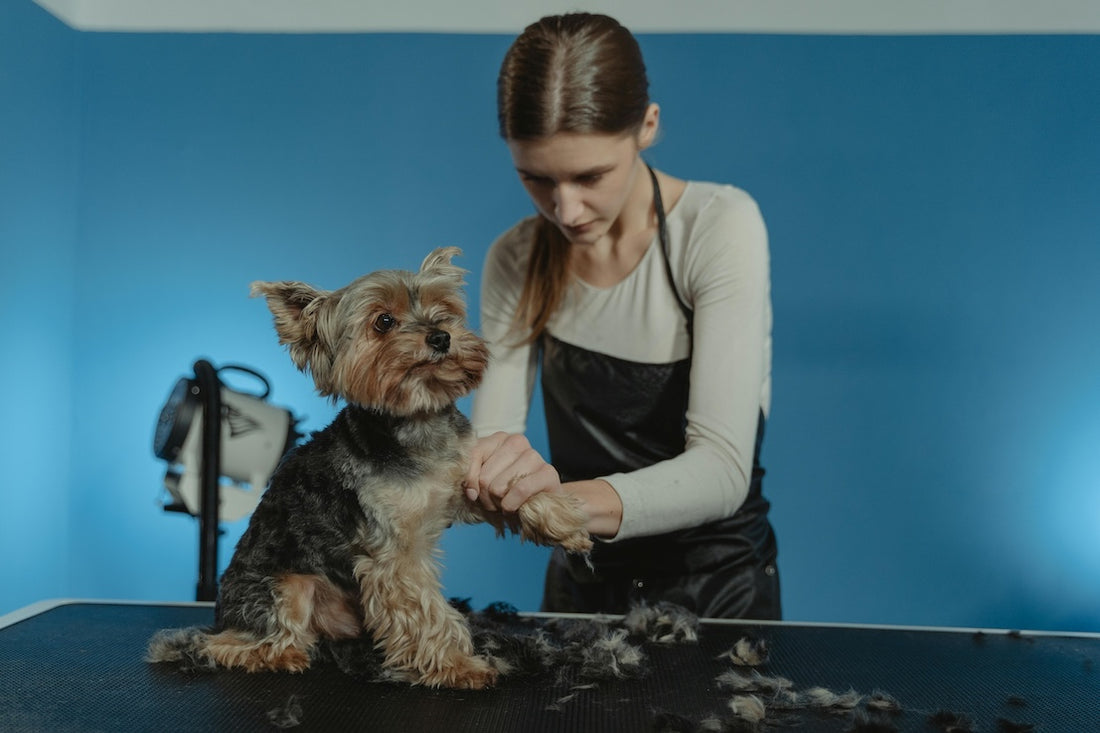Introduction
Grooming is an essential part of dog care that goes beyond just keeping your dog looking good. Regular grooming sessions not only help in managing shedding but also ensure that your dog is healthy and comfortable. Grooming your dog can prevent skin diseases, help early detection of issues like fleas and ticks, and improve the overall hygiene of your pet. Moreover, grooming sessions can serve as special bonding time between you and your dog, fostering a deeper connection and understanding.
In this guide, we will explore everything you need to know to groom your dog effectively. Whether you are planning to groom your dog at home or considering professional services, this guide will provide you with step-by-step instructions, from brushing and bathing to nail and ear care. We will also discuss the grooming needs of specific breeds and provide answers to frequently asked questions. Our goal is to help you ensure that grooming becomes a positive experience for both you and your dog.
Preparation for Dog Grooming
Before you start grooming your dog, it’s important to be well-prepared. Proper preparation not only makes the process smoother but also safer and more enjoyable for both you and your pet.
Tools and Environment
Tools Needed:
- Brushes and Combs: Different coat types require different brushes. For example, a slicker brush is ideal for detangling fur, while a bristle brush works best for short-haired breeds.
- Dog Shampoo and Conditioner: Choose a shampoo and conditioner suitable for your dog's skin type. Look for products that are gentle and free from harsh chemicals. Here's a list of recommended dog shampoos and conditioners.
- Nail Clippers or Grinders: These should be appropriate for your dog’s size and nail thickness.
- Ear Cleaning Solution: Use a solution formulated for dogs to avoid irritation.
- Toothbrush and Toothpaste for Dogs: Ensure oral health with products designed specifically for canines.
- Grooming Wipes: For quick clean-ups and sensitive areas like around the eyes.
Setting Up the Grooming Area:
- Choose a quiet, well-lit place for grooming to make the experience calm and stress-free.
- Ensure all tools are clean and within easy reach.
- Have treats on hand to reward your dog for good behavior during the session.
Preparing Your Dog
Mental Preparation:
- Begin grooming sessions when your dog is calm. A good time might be after a walk or playtime.
- Talk to your dog in a calm and reassuring tone to help them relax.
Physical Preparation:
- Inspect your dog for any mats, tangles, or areas of sensitivity before you start grooming.
- If your dog isn’t used to grooming, start slowly, gradually introducing them to each tool and activity.
Step-by-Step Grooming Process
Grooming your dog involves several steps, each important for maintaining their health and appearance. Here’s how to effectively groom your dog at home.
Brushing
Why It’s Important:
- Removes dead hair and skin.
- Stimulates natural oil production in the skin, which helps keep the coat shiny and healthy.
- Helps to distribute those natural oils throughout the coat.
Techniques:
- Use the appropriate brush for your dog’s coat type.
- Brush in the direction of hair growth to avoid discomfort.
- For dogs with long fur, consider using a detangler spray to ease brushing and prevent pulling.
Bathing
Best Practices:
- Use lukewarm water and wet your dog thoroughly before applying shampoo.
- Carefully avoid getting soap in the eyes, ears, or nose.
- Rinse thoroughly, as leftover soap can cause irritation.
Recommended Products:
- Choose hypoallergenic shampoos for dogs with sensitive skin.
- Consider a conditioner if your dog has a particularly dry or long coat.
Nail Trimming
Safety Tips:
- Use sharp clippers or a grinder to avoid splitting the nails.
- Be cautious not to cut into the quick, the pink area within the nail where blood vessels and nerves are present.
Ear Cleaning
Proper Cleaning Methods:
- Apply a vet-recommended ear cleaning solution.
- Gently wipe the outer ear with a cotton ball or soft cloth.
Teeth Cleaning
Importance and Techniques:
- Regular teeth cleaning prevents dental diseases.
- Use a dog-specific toothpaste and brush gently along the gum line.

Professional Grooming vs. Home Grooming
Deciding whether to groom your dog at home or seek professional help depends on several factors, including the dog's breed, coat type, and your own grooming skills. Here’s a detailed comparison to help you make an informed choice:
Benefits of Professional Grooming
- Expertise: Professional groomers are trained to handle various breeds and can manage challenging grooming tasks that might be difficult at home, such as safely clipping nails, cleaning ears, and styling fur.
- Equipment: Grooming salons are equipped with professional tools that can provide a higher level of grooming, which is especially beneficial for dogs with special grooming needs.
- Convenience: Opting for professional grooming can save time and reduce the stress of having to groom your dog yourself, especially for those with busy schedules or less experience in grooming.
Drawbacks of Professional Grooming
- Cost: Regular visits to a professional groomer can be expensive, particularly for large dogs or those requiring frequent grooming.
- Stress for Some Dogs: Some dogs may feel anxious or stressed in a grooming salon, especially if they are not used to being handled by strangers or are sensitive to the noisy environment of a grooming shop.
Advantages of Home Grooming
- Cost-Effective: Home grooming eliminates the costs associated with professional grooming services.
- Bonding: Grooming your dog at home can strengthen your bond, as it involves spending quality time together and can be a comforting experience for your pet.
- Control: When you groom your dog at home, you have complete control over the products and tools used, which is beneficial if your dog has allergies or sensitive skin.
Challenges of Home Grooming
- Skill Level: Effective grooming requires a certain level of skill, especially for breeds with complex grooming needs. Without the proper techniques, you might accidentally injure your dog or do an unsatisfactory job.
- Time-Consuming: Grooming a dog properly can take a significant amount of time, which might be challenging for pet owners with a tight schedule.
Grooming Tips for Specific Breeds
Different breeds of dogs have varied grooming requirements based on their coat type, general health, and lifestyle. Understanding these needs can help you groom them more effectively, whether at home or with a professional.
Labrador Retrievers
- Coat Care: Regular brushing is needed to manage shedding, especially during seasonal changes.
- Bathing: Monthly baths are usually sufficient unless they get particularly dirty from outdoor activities.
German Shepherds
- Brushing: Due to their dense fur, daily brushing is recommended to prevent matting and reduce shedding.
- Nail Care: Regular nail trimming is essential to prevent discomfort and mobility issues.
Poodles
- Haircuts: Poodles require regular haircuts every 4-6 weeks to keep their coat short and manageable.
- Skin Care: They often need gentle shampoos to maintain skin health due to their curly hair trapping dirt and moisture.
FAQs About Dog Grooming
Here are some commonly asked questions about dog grooming:
-
How often should I groom my dog?
- The frequency of grooming depends on the breed, coat type, and lifestyle of your dog. Generally, brushing should be done several times a week, baths once a month, and nail trimming as needed when nails become too long.
-
Can I use human products on my dog?
- It is not recommended to use human products like shampoo on dogs because they have different pH levels and can cause irritation or dry out the dog’s skin.
-
What should I do if my dog hates being groomed?
- Gradually acclimate your dog to grooming processes by starting with short sessions and using lots of positive reinforcement, such as treats and praise. Also, consider consulting a professional groomer for tips tailored to your dog's temperament.
Conclusion
Regular grooming is essential for maintaining your dog's health, appearance, and wellbeing. Whether you choose to groom your dog at home or use professional services, understanding the needs of your specific breed and taking a gentle approach will ensure that grooming remains a positive experience for both you and your pet.

